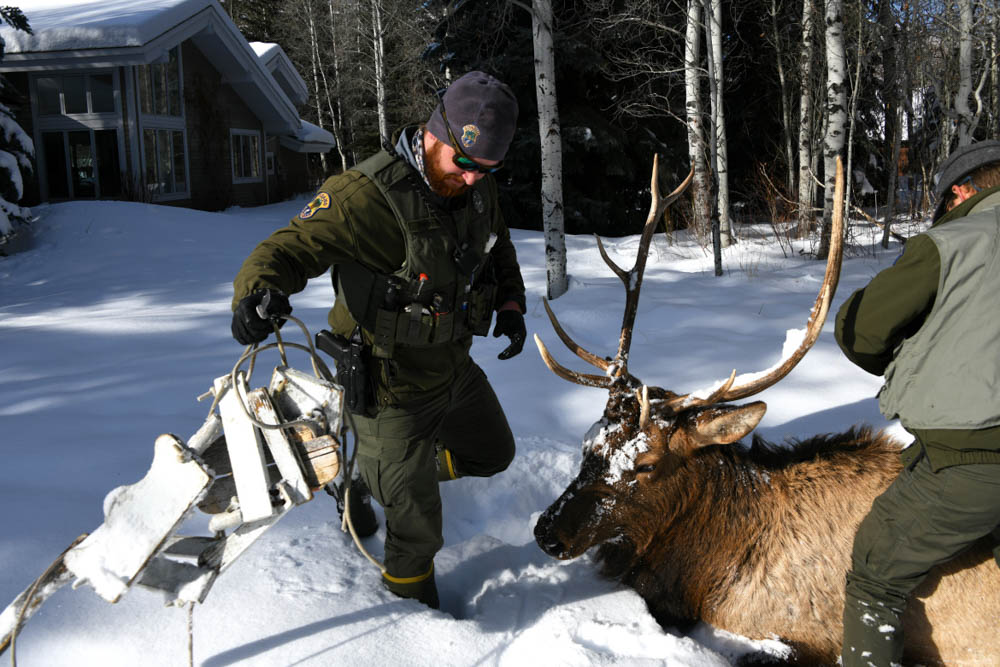Below is a news release from the Idaho Department of Fish and Game.
We all have a checklist we run through when winterizing our homes when fall turns to winter. But did you know that you need a checklist of items that need to be done to protect wildlife that might pass through your yards?
Residents across Idaho are encouraged to inspect their yards for items that can entangle wildlife, especially wildlife with antlers like deer, elk and moose. This means taking down swings, hammocks, wires and strings of lights and putting them away in the garage or other secure storage area. Entangled wildlife can die from choking, exhaustion, or injure themselves in efforts to get free. Entangled wildlife can easily injure people who are trying to help free them from backyard equipment.
Every year, Fish and Game offices across the state receive numerous reports about wildlife that has become entangled.
Recently a bull elk died in the Wood River Valley after it became entangled and strangled by an item hanging in a backyard.
Often, the only way to free wildlife from backyard entanglements is to dart the animal with anesthetizing drugs. While viewed as an easy remedy, the use of drugs to free wildlife has many inherent risks, both to the animal but also to the Fish and Game team responsible for dealing with the entangled animal.
According to Brandyn Hurd, Senior Conservation Officer in the Wood River Valley “We want everyone who might have deer, elk or moose living near their neighborhoods to take a walk through their yards and look for things that can entangle wildlife. Meaning, all backyard furniture and playground equipment needs to be removed and secured during the winter months. Wildlife can easily get entangled in this equipment which puts the animal at risk, but it also puts our Fish and Game team at risk when using drugs to anesthetize the animal and working to free them from backyard equipment.”
Winter wildlife safety
Wildlife living in and around Idaho communities is common. In the winter, most big game animals migrate down to lower elevations winter range where the winter weather is less severe. But that also increases the potential for conflicts between wildlife and people.
Here are a few more tips to keep people, their pets and wildlife safe during the winter months.
- Don’t feed wildlife. While it may be a “feel good” activity for people, feeding wildlife can result in unintended consequences for the animals. Deer and elk receiving supplemental feed often quickly congregate in unnaturally high numbers in small areas, which increases the chances of diseases spreading among the herd.
- Feeding wildlife like deer can attract them into your residential space which in turn can attract predators, like mountain lions. Residents in the Wood River Valley have already reported lions killing deer in their backyards.
- When recreating or even just taking your dog for a walk, keep it on leash at all times. Dogs chasing wildlife is illegal. When a pet chases wildlife and causes it to flee an area it uses up critical fat reserves needed to survive the winter.
- Winter recreationists such as skiers, snowshoers and snowmobilers should avoid big game winter range when animals are present to minimize disturbances to them during the stressful winter months.
- Homeowners should cover large egress basement window wells so that wildlife can’t fall into the wells.
- As snow deepens, wildlife tends to walk along the sides of houses, causing them to fall into the wells.
(Photo credit: Idaho Department of Fish and Game)
